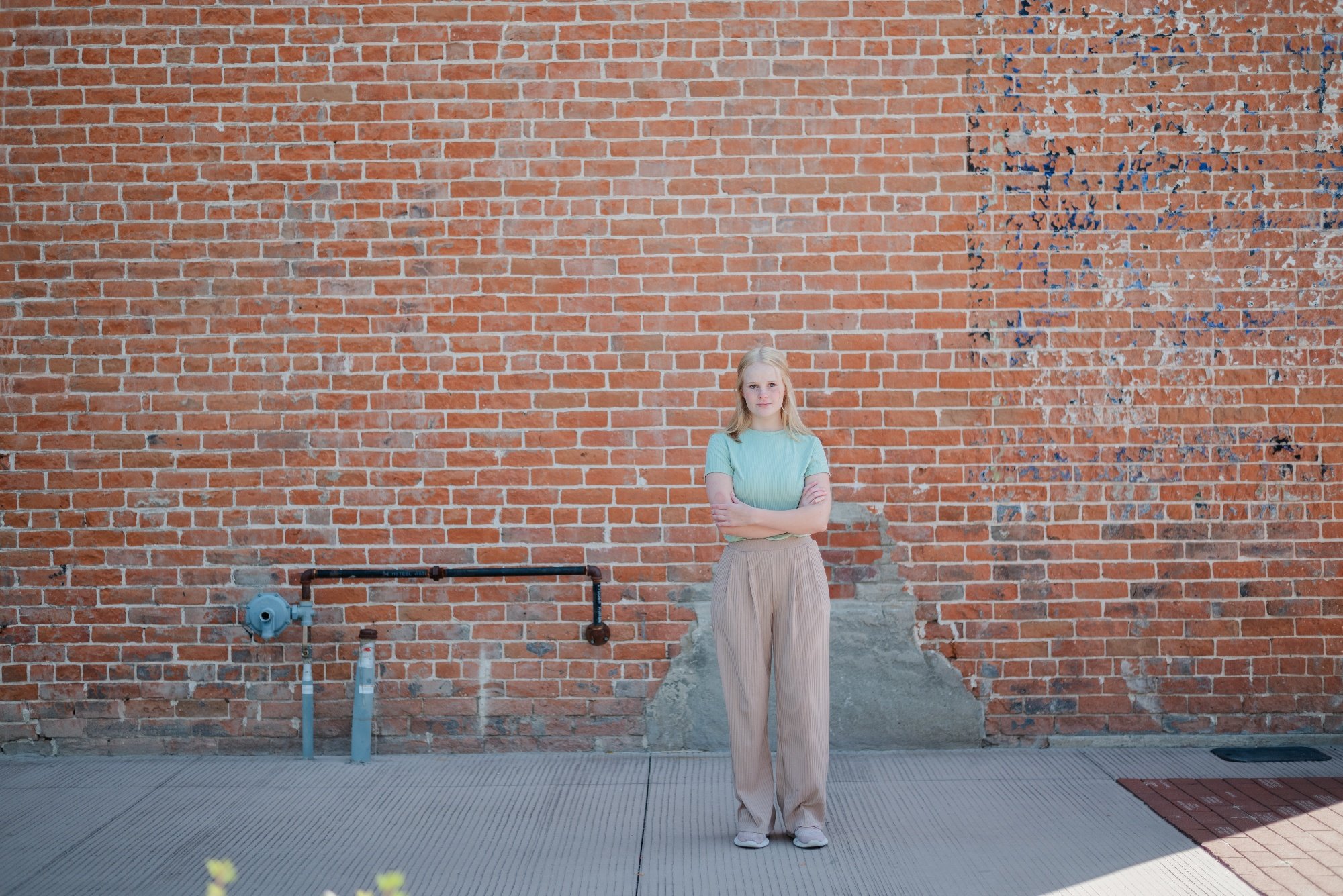Idaho Youth Ranch
Subscribe to our blog
July 2014: In addition to receiving counseling, kids in our residential programs spend time every week getting involved in their community through volunteer projects. The Idaho Youth Ranch service-learning program has included many community organizations and nonprofits. To date, IYR kids have served more than 100 meals at the Boise Rescue Mission, packed 1500 lbs. of donations at the Idaho Foodbank, delivered 32 meals for Meals on Wheels, and cared for service animals with Mini-Joys, a local non-profit that provides miniature horses for therapeutic healing.
Many of the kids at Hays have also taken on individual opportunities. One resident acts as a mentor for the Boy’s and Girl’s Club and another is a ZooTeen volunteer at Zoo Boise who provides customer service and informational sessions and even special presentations.
Service-learning, at IYR’s residential youth programs, allows kids to experience the satisfaction of making a difference—for some, for the first time in their lives. It builds confidence and a sense of belonging. And it's fun! Service-learning is so popular that some of our alumni love coming back to participate even after they graduate from the program.
Davey Hamilton Surprises Hays House Kids
December 2013: Idaho's own Davey Hamilton showed up at Hays House on Monday morning with a great holiday surprise for the kids at Hays House!
Thanks to KTVB.com and Paul Boehlke for covering the story.
Harvest at Hays House
September 2014: Last April, staff and kids at Hays House moved the backyard garden to a sunny spot beside the greenhouse and built three new garden beds with salvaged concrete blocks. North End Organic Nursery (NEON) donated three cubic yards of rich, fertile soil and Edwards Greenhouse donated cash the kids spent on pumpkin starts.
A volunteer from the community came in to help with transplanting the starts and the rest of the vegetable seeds and starts were purchased from Edwards or donated by staff. “I was glad to find a home for the volunteer tomato plants that had popped up all over my front yard,” said Hays youth specialist Dove Rainbow.
Here are some photos of the garden beds that the Hays residents built next to the greenhouse. It shows the gorgeous crop of pumpkins taking over that section of the yard, and a greenhouse full of tomato plants. The Hays garden also produced lettuce, kale, some herbs, and sunflowers.
The kids seemed to really enjoy the physical work of putting together a garden, and residents and staff worked as a team to maintain the garden, watering and weeding it, along with the busy schedule of day-to-day life at the shelter.
The current goal with the garden is to sell each pumpkin for a small donation and use the proceeds to make a donation to another kid-friendly, healthy organization in the Boise area.
Dog Days at Hays House
October 2014: There’s a new face at Hays House, and he’s not like anyone who’s been admitted or hired before. At three years old, he’s much younger than a typical Hays resident or staff member. Instead of preparing him to go back out into the world on his own, we intend to keep him for life. That’s because, having once been at-risk himself, he has now found his own promising future in a new career of helping others find their promising futures with the Idaho Youth Ranch.
Meet Bear!
Bear came to us thanks to IYR's long-time partnership with the Idaho Humane Society. He is a brand-new graduate of their Inmate Dog Alliance Project of Idaho (IDAPI) program, in which shelter dogs who need a little extra training or TLC to become more adoptable get eight weeks of one-on-one attention. Their trainers? Inmates at Idaho state correctional facilities.
As the Idaho Humane Society website explains, “IDAPI pairs shelter dogs with inmates who care for the dogs, live with the dogs, and train them utilizing positive reinforcement techniques.” The dogs, many of whom are kennel-stressed, under-socialized, blind, deaf, or recovering from trauma, learn how to be wonderful pets thanks to a program built on patience, structure, and plenty of praise. The IDAPI program has been running successfully for 10 years, with tremendous benefits for the inmates as well as the dogs and their adoptive families.
Each dog gets crate trained, leash trained, lots of socialization, and learns a series of standard commands (heel, stay, sit, etc.) as well as tricks. According to Bear’s resume, he’s proven his mastery of more than 44 tricks!
Some of the Hays staff and residents “auditioned” Bear before he went into IDAPI to make sure he had the potential to be a good fit. During that first visit, one 9-year old resident fell totally in love with him and wouldn’t leave his side for the whole day. He followed him around with a bowl of water and kept asking, “Are you thirsty, Bear? Need some water, boy?”
“Bear's just a natural,” said program director Patrick Sullivan. “He’s the right age, the right temperament, and the right energy level for us and the kids.”
Having passed the audition, Bear went on to the two-month IDAPI program. IYR officially adopted him at his IDAPI graduation day on Saturday, September 20, which included a group obedience training class at the Humane Society. As with any family environment, a new dog in the house means a chance for all the kids to experience unconditional love and affection with a fun playmate. It also means learning shared responsibility and how to work together to settle whose turn it is to feed or walk or clean up after the dog.
Animal-assisted therapy has long been an essential part of treatment for the kids we serve at Idaho Youth Ranch, especially at our Ranch Campus, where each kid has a 4-H animal to care for and show at the fair and where all the kids get to work with horses. This past year, our partnership with the Mica Foundation has helped make equine therapy part of treatment for the boys at Anchor House in Coeur d’Alene.
Our long-term plan is to keep building on the amazing breakthroughs that happen between animals and kids, which will include making canine therapy part of every IYR program. Thanks to the generous support of our donors and thrift store customers, we've made the first step in bringing that plan to life by adopting Bear.
One Thousand Hours of Service
October 2014: This August marked the inaugural Hays Shelter Home 1K Service Awards. The event honored the service-learning efforts of every resident who participated in the program during the past year.
Service-learning, at Hays and all of IYR’s residential youth programs, allows kids to experience the satisfaction of making a difference—for some, for the first time in their lives. Hays kids spend time every week getting involved in their community through volunteer projects they plan themselves during weekly Youth Council meetings. It builds confidence and a sense of belonging—and it's fun!
This year, staff and kids set a goal of completing 1,000 hours of service-learning, and they’ve already exceeded it! As of August, they had completed over 1,150 hours of service so far in 2014 and are projected to have completed nearly 1,500 hours of service by the end of the year.
Every Hays resident who logged any service learning hours during the past year was invited to the party to enjoy a barbeque, an awards ceremony, and a chance to celebrate their remarkable achievement together. Several Treasure Valley businesses got involved in the celebration, too, generously donating T-shirts and gift cards for the honorees.
Hand-made trophies were created for each attendee as well as prizes. Notably, the recipient of the Hays 1K Lifetime Achievement award, a young man who has been in and out of the shelter for the past few years, could not hide his pride. We saw it in his giddy smile when the entire group applauded his having spent over 200 hours of his time giving back to his community. "I guess all these tiny bits add up to a lot," he remarked later that evening. We couldn’t agree more.
You can read more about IYR's service-learning program in previous posts on our blog
Hays House Kids Explore the Power of “Willingness”
July 2015: It was a sultry Saturday afternoon, 109 degrees in the shade. Three therapists and three teenage girls from Hays House sat under the park’s only tree, watching the sun beat down on three horses in a sand-filled arena with no shade at all. They (the humans, not the horses) were discussing the idea of “willingness” and the girls were being asked to think about and try to practice willingness at today’s equine therapy session.
It appeared to be a tall order. None of the girls were enthusiastic about practicing anything in that kind of heat. Especially when they found out they had to trade their shorts and sandals for long jeans, socks, and boots to get near the horses, for safety reasons.
The equine specialist, IYR clinician and Hays youth specialist tried to get things rolling by asking the girls what they thought the horses might be thinking or feeling.
“Well, duh, they’re HOT!” was pretty much the unanimous reply.
So the therapists brought out buckets of water and a sponge, in case anyone wanted to help the horses cool off, and some bandannas for the girls to soak in cold water and tie around their necks. They also unloaded a pile of materials from the horse trailer: long wooden poles, foam pool noodles, hula hoops, rope, traffic cones, and a large tarp, laid it out at one end of the arena, and challenged the group to 1) construct some kind of shade and 2) get at least one of the horses under it by 2:00 pm, an hour away.
It sounded impossible. But despite being reluctant at first and despite having clarified that participation was voluntary and nobody could make them do anything with the horses if they didn’t want to, all three girls were soon too curious not to mosey into the arena and start coming up with ideas. Nobody stayed behind in the shade.
Through plenty of trial and error and some help from the grownups, the group managed to construct a makeshift shelter that cast a shadow large enough to cover a horse, as long as somebody held up the main support pole. One of the girls who feared she was allergic to horses offered to man the shelter.
The other two girls approached the horses with a halter and lead rope, sometimes working together and sometimes taking turns trying to catch one. Gentleness and patience proved to work a lot better than annoyance or frustration, and they managed to get one of the horses, a chestnut Arab gelding, over to the structure. But at the last minute he balked, planting his forefeet and refusing to budge. Over and over, one of the girls tried to lead him into the shade while the other two called out advice.
“Pull harder!”
“Try walking backwards.”
“Make him do it, come on, he’s only a horse.”
And then, with 2:00 pm only minutes away, somebody said, “Hey, what if you tried going in from the other side?” All the helpers shifted position to open up a kind of tunnel under the tarp. It worked! As girl and horse easily walked through the tunnel, everyone cheered and laughed. And, in what looked unmistakenly like a horse high-five, the little gelding nuzzled the girl leading him and leaned his head into her shoulder.
"Look, he's lovin' on me!" she called out, grinning wide.
Everyone retreated back to the shade for some well-deserved Klondike Bars and a chance to talk about what they had just accomplished. They discussed how forcing, pulling harder or expressing frustration doesn’t work so well with horses (or teenagers). The girls talked about how things really started working when everyone helped and they tried out different ideas. About how good it felt to succeed together—even the horse got into it by the end! And especially, the girls talked about how willingness could make the difference between the impossible and the possible.




Leave a Comment